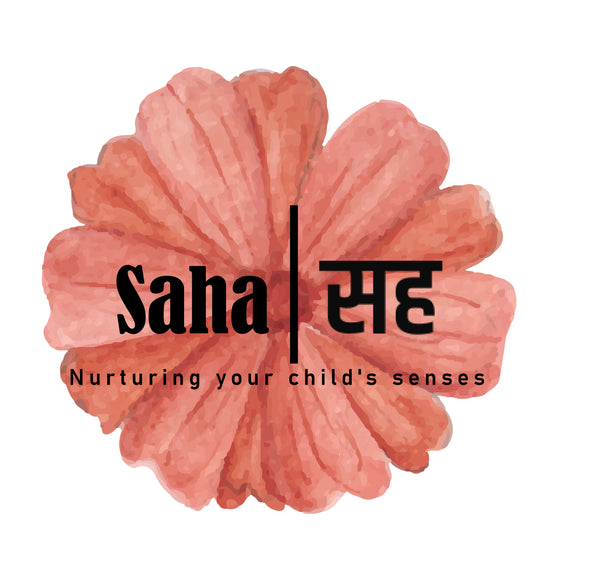
Are Wooden Toys Better for Kids?
Share
Walk through any toy aisle today, and you’ll see shelves stacked high with colorful plastic toys flashing lights, playing music, and making all sorts of noises. 90% of the global toy market consists of toys made of plastic. Yet, in many thoughtful homes, wooden toys — simple, sturdy, and timeless — are making a big comeback. So, are wooden toys really better for kids? Let’s unpack this question by looking at safety, developmental value, sustainability, and the spirit of open-ended play.
1. Safety: Fewer Toxins, More Peace of Mind
One of the strongest arguments for choosing wooden toys is safety. Many parents worry about the chemicals in plastic toys — and for good reason. Some plastic toys may contain harmful chemicals like BPA, phthalates, or PVC, which have been linked to health concerns in young children (American Academy of Pediatrics, 2018).
In contrast, well-crafted wooden toys are often made from sustainably sourced hardwoods and finished with natural oils or water-based, non-toxic paints. When parents buy from reputable brands that meet international safety standards, they’re often choosing a safer, cleaner option for little hands and mouths. Babies and toddlers, after all, explore the world with all their senses — including taste!
2. Durability: Designed to Last Generations
Wooden toys stand the test of time — literally. Unlike their plastic counterparts, which can crack, break, or lose parts, wooden toys are sturdy and resilient. Some families pass down wooden blocks, trains, and dolls from one generation to the next.
This durability not only reduces waste but also means fewer replacements, saving money in the long run. A study by the Ellen MacArthur Foundation (2016) points out that high-quality toys made from renewable materials contribute to a circular economy — minimizing landfill waste and encouraging reuse.
3. Supporting Open-Ended Play
Plastic toys often come with flashing lights, preset buttons, and instructions. They’re designed to do something to the child — entertaining them passively. Wooden toys, on the other hand, are more likely to do something for the child — inviting them to do the imagining and the doing.
Simple blocks, peg dolls, wooden animals, and trains have no single 'right' way to play. This is called open-ended play — play with no fixed outcome, which research shows helps children develop creativity, problem-solving, and critical thinking (Ginsburg, 2007).
For example, a set of wooden blocks can become a castle, a bridge, a zoo — whatever the child imagines today. Tomorrow, the same blocks can become something else entirely. This flexibility gives children the freedom to lead their own play, follow their interests, and express themselves.
4. Sensory and Developmental Benefits
Wooden toys offer a unique sensory experience. They feel warm, solid, and natural in the hand — a sharp contrast to cold, smooth plastic. This tactile feedback helps children develop fine motor skills and hand strength as they grasp, stack, build, and balance.
Many educators aligned with Waldorf and Montessori philosophies value wooden toys for exactly this reason. Dr. Maria Montessori believed that children’s toys should be made from natural materials to ground them in the real world (Montessori, 1967). When children play with natural textures, they build a stronger connection to nature and their environment.
5. Better for the Planet
Beyond the child, wooden toys are kinder to the Earth. Mass-produced plastic toys generate huge amounts of carbon emissions and often end up in landfills — where they can take hundreds of years to break down (UNEP, 2018).
Sustainably harvested wooden toys, by comparison, come from renewable resources. Many brands today use FSC-certified wood (Forest Stewardship Council), meaning forests are managed responsibly and workers are treated fairly.
By choosing fewer, better-quality toys, families can cut down on consumption and instill values of mindful, sustainable living in their children.
6. Do Children Miss Out on Anything?
Does this mean plastic toys are always 'bad'? Not necessarily. Some plastic toys — especially construction sets like LEGO or STEM-focused kits — offer valuable learning opportunities and engineering challenges. But when it comes to babies, toddlers, and preschoolers, the benefits of simple, open-ended, sensory-rich play often outweigh the need for electronic bells and whistles.
Ultimately, the right balance depends on your child’s age, interests, and your family’s values. Many families find that a toy shelf with mostly open-ended, natural toys — alongside a few well-chosen plastic sets — works well.
Conclusion: Are Wooden Toys Better?
Wooden toys aren’t just beautiful to look at — they can nurture safer, richer, more meaningful play. They invite children to use their imagination, build real-life skills, and engage their senses. They last longer, break less often, and often come from sources that are better for our planet.
In a world overflowing with cheap, disposable plastic, choosing wooden toys is a small but powerful way to honor childhood’s simplicity and protect the Earth our children will inherit.
When you choose wooden toys, you’re not just buying a toy — you’re investing in timeless, open-ended play that grows with your child. And that’s a pretty beautiful thing.
References
- American Academy of Pediatrics. (2018). Plastic and food: Safety considerations. Retrieved from https://www.aap.org
- Ellen MacArthur Foundation. (2016). The New Plastics Economy: Rethinking the future of plastics. Retrieved from https://ellenmacarthurfoundation.org
- Ginsburg, K. R. (2007). The Importance of Play in Promoting Healthy Child Development and Maintaining Strong Parent-Child Bonds. Pediatrics, 119(1), 182–191. https://doi.org/10.1542/peds.2006-2697
- Montessori, M. (1967). The Discovery of the Child. New York: Ballantine Books.
- United Nations Environment Programme. (2018). Single-Use Plastics: A Roadmap for Sustainability. Retrieved from https://www.unep.org
